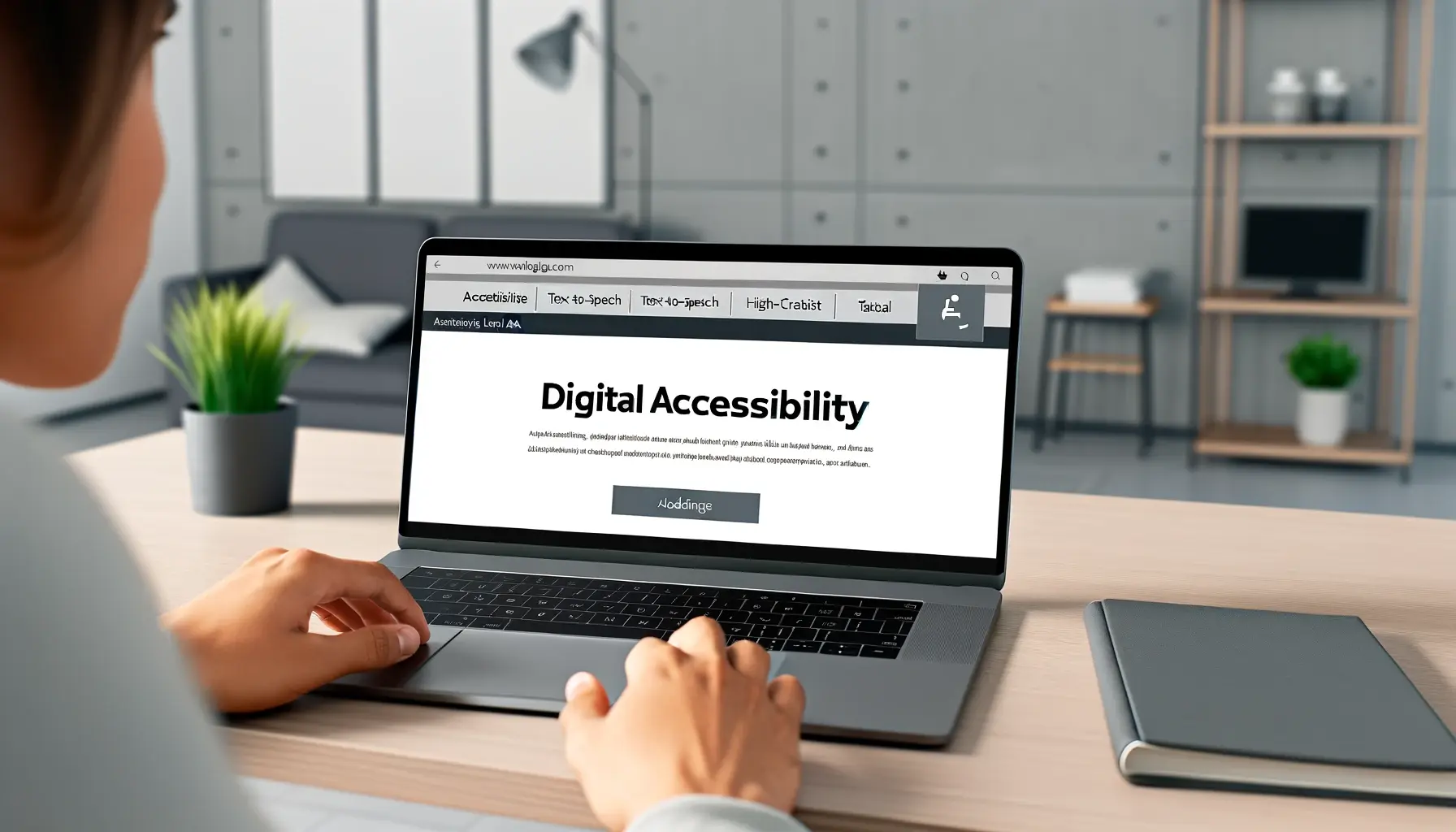Planning is part of creating, maintaining, and growing a business. You plan for the initial start-up. You plan for its ongoing progress. And you plan on how to increase your business’s success. However, within that plan should be a strategy to address accessibility barriers affecting your staff and clients. Although new legislation mandates companies and organizations to create a more accessible environment, there are still barriers that affect the everyday life of people with disabilities.
Why should I create a long-term accessibility plan?
According to the World Wide Web Consortium (W3), having a clear assessment of the work that needs to be done, an outline of responsibilities, and continuous follow-ups are all part of implementing accessibility plans. However, aside from staying on top of your company’s or organization’s accessibility efforts, having a long-term plan has structural benefits. For instance:
1. A more precise understanding of where the accessibility barriers come from
One of the benefits of having a long-term accessibility plan is discovering and understanding where the accessibility barriers come from in the first place. This allows you to address the obstacles and uncover patterns that lead to them.
2. Promotion of inclusivity and diversity
Every industry wants to ensure their products, services, and digital content are accessible to everyone, including people with disabilities. When companies consider different needs from the beginning, they welcome more people and become more inclusive.
3. Adherence to legal and ethical obligations within Canada and its provinces
Each country has its own laws and regulations requiring organizations to meet accessibility standards. In Canada, we have the Accessible Canada Act (ACA) that guides businesses, the federal government, departments, and organizations in providing accessible services to persons with disabilities. The ADA is implemented on the federal level. Therefore, companies and organizations in the public and private sectors are obligated to abide by its terms. A long-term plan helps companies comply with these legal requirements and avoid potential lawsuits and penalties.
4. Improved user experience (UX)
Nowadays, we do everything online: pay bills, schedule appointments, and even order groceries. With users spending more time online, the user experience has a big effect on consumer satisfaction and the resulting consumer behavior. Now, companies and organizations have dedicated staff to help decipher user pain points and address them in the design of a website or digital material. What often gets left behind is the accessibility factor in user experience. Accessibility enhancements often benefit all users, not just those with disabilities. Companies can enhance customer satisfaction and loyalty by providing more user-friendly and intuitive experiences.
5. Enhanced reputation of the company or organization
It’s been shown that Millennials and Gen Z are more likely to interact with companies and organizations that take the initiative to create equal opportunities. While companies and organizations may be running a business, consumers want the business to own up to its responsibilities. And that includes creating an equal opportunity for all. Committing to accessibility can enhance a company’s reputation as a socially responsible and empathetic organization. In return, it can attract more customers, partners, and potential employees who value inclusivity. And we must remember to mention the competitive advantage accessibility provides as well.
So how do I create a long-term accessibility plan for my business?
Long-term plans usually usually have goals that are met within four to five years. While a long-term accessibility plan may sound strenuous, breaking down the plan into key elements helps ease the thought process and expectations. To start your long-term accessibility plan, you’ll want to incorporate our five-step process. Starting with…
Step 1: Perform an accessibility audit
In step one, you audit your digital materials—from websites to PDFs. Consider an accessibility audit as a “check-up” for a website or digital product. It’s all about making sure the content is easy for everyone to access and use, including people with disabilities. During an accessibility audit, experts go through the website, app, or digital document with a fine-tooth comb. They look at things like buttons, images, text, and how everything works together. Overall, they’re searching for any barriers that might make it difficult for some people to use the digital resource. The results from the audit provide a starting point for your long-term accessibility plan. This leads us to step two.
Step 2: Conduct a gap assessment
In step one, we found the gaps. In step two, we’re trying to understand why these gaps exist. Gaps and barriers in websites, PDFs, and apps are why users with disabilities have difficulty accessing information and using resources that should be easily accessible. Therefore it isn’t enough to fix the gap. We have to understand why the gap came about. During a gap assessment, an expert reviews the accessibility audit to pinpoint the gaps and barriers and then analyzes why they occurred. Some causes include:
- Insufficient technology to implement specific accessibility features.
- Shortage of education on policies and concepts and their impact on society, businesses, and services.
- Missing or insufficient onscreen features such as proper color contrast, missing alt texts, keyboard accessibility, etc.
After the gap assessment, you’ll have a clearer understanding of what’s missing and what areas need further investment for improvement.
Step 3: Create an action plan
Now that you know what areas you need to invest time or money in, you should create an action plan. To achieve your long-term accessibility goals in your action plan, you’ll need to implement new procedures, policies, requirements, and possibly even a new team dedicated to those goals. When implementing these new policies and requirements, it’s important to remember your milestones. The long-term accessibility plan is meant to be achieved within four to five years. However, the critical factor in meeting this goal is having smaller achievable milestones. For instance: let’s say one of the gaps found in the accessibility audit was important PDF documents that are inaccessible. This correlates to the lack of education regarding accessible PDFs and what’s required to ensure accessibility. In this example, a company may implement a new policy and action plan to tackle the educational gap by providing an onsite training course for staff and employees. As staff and employees are educated and updated on the latest accessibility barriers and best practices, the accessibility gaps in important PDF documents diminish.
Step 4: Create a designated accessibility team
As new policies and regulations are rolled out to address the accessibility gaps found during the audit, companies and organizations can designate an accessibility team. It can be an in-house team or a combination of third party personnel and a few in-house employees to help balance the requirements. Creating a designated accessibility team ensures current efforts are in sync and that the organization stays updated with the latest legislation. For instance, it’s important for Ontario organizations to stay up-to-date with the Accessibility for Ontarians with Disabilities Act (AODA). The accessibility team would be responsible for the following:
- Maintaining the organization’s compliance status across all the departments
- Providing subject matter expertise to all staff and employees
- Reviewing yearly plans and status reports and updating them to consistently comply with legislation
- Conducting continuous audits to identify new or ongoing gaps in the organization’s accessibility compliance
- Integrating accessibility requirements into IT projects at initial stages
Step 5: Continuously improve your accessibility efforts
Lastly, step five ensures you keep up to date with your accessibility efforts. Creating a long-term accessibility plan is not a one-and-done project. Every four or five years, it’s time to revisit the program and start over:
- Fill in the gaps.
- Create an action plan.
- Update the accessibility team with the new project.
Continuously improving your accessibility efforts provides benefits to your company or organization. Not only do you positively impact those who use your services, but you also maintain compliance with new legislation, which is frequently introduced.
Let Accessibility Partners help put together your first long-term accessibility plan.
As mentioned, making your company or organization accessible isn’t a one-and-done thing. Because the information environment is constantly changing, you need to adapt to it and ensure it doesn’t hinder those that rely on you. With roughly 15% of the world’s population having some form of disability, it’s crucial that our society implements policies and regulations that facilitate accessibility for disabled users. Our five-step process ensures your company or organization takes the right steps toward creating a more accessible environment for all. Contact us below for a free consultation on how we can implement our five-step process into your long-term accessibility plan.







